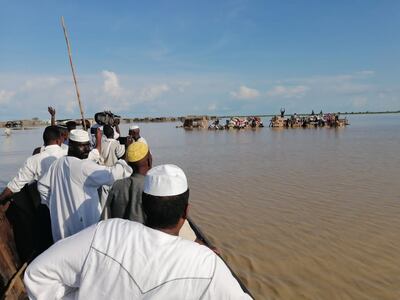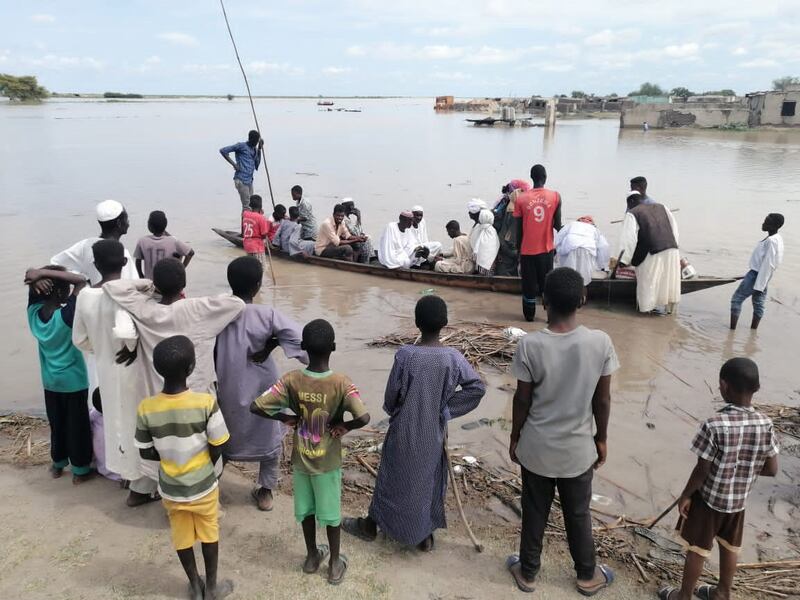Floods have inundated nearly 60 villages in a rural area south of Sudan’s capital Khartoum, forcing at least 15,000 families to flee their badly damaged homes and seek refuge on higher ground, two senior officials told The National on Thursday.
Police Brig-Gen Abdul-Jaleel Abdul-Raheem, spokesman for the national Civil Defence Forces, said the floods took place this week in the Gouda area in White Nile province, near the border with South Sudan.
He said torrential rains caused the White Nile to flood, but there were no reports of casualties. Some of the displaced were housed in tents and schools on higher ground, he added.

A senior local official, Al Waleed Amer Bahr, said a total of 56 villages were wiped out by the floods and put the number of people displaced at 20,000.
"Almost the entire area is under water. Dry land is very scarce now," he said. He complained that there was an acute shortage of tents to house the displaced and that there was a serious threat from water-borne diseases and swarms of mosquitoes attracted by the water.
The Gouda area is made up of small communities living in small villages surviving on farming and raising cattle. Mr Bahr said thousands remained stranded in their villages unable to move to dry lands and that rescue operations were hampered by the remoteness of the stricken area.
To the north in Khartoum, the streets of the city remained under water a week after heavy rainfall, with movement in the capital continuing to be significantly curtailed.
The city’s municipality sent trucks to main roads and the downtown area to pump water out of the streets, but most residential areas and outlying and side roads remained under water.
Sudan’s rainy season routinely brings havoc to the vast Afro-Arab nation, which has rickety or non-existing infrastructure. The lack of a drainage system in Khartoum, for example, often leads to flooding when it rains heavily there.
The rain also swells the Blue and White Niles and frequently causes them to burst their banks and flood surrounding areas. Heavy rainfall on Ethiopia’s highlands, source of the Blue Nile, also contributes to the perils of Sudan's rainy season.
Mr Bahr said flooding from the nearby Blue Nile was partly to blame for what happened in White Nile province.







